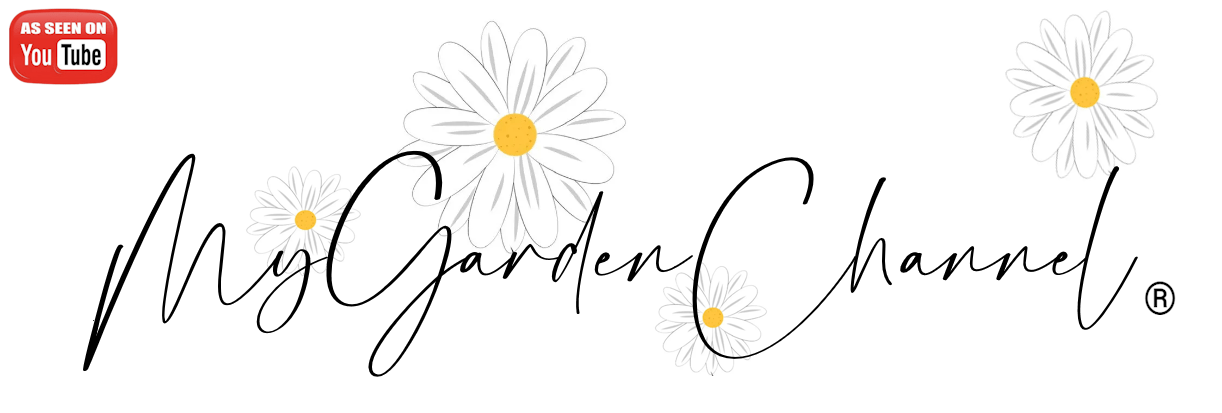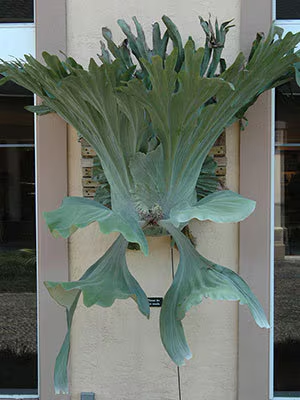Overview
- Common Name: Staghorn Fern
- Botanical Name: Platycerium spp.
- Type: Epiphytic fern (grows on other surfaces, not in soil)
- Origin: Tropical regions of Africa, Southeast Asia, Australia, and South America
- Growth Form: Rosette of antler-like fronds with a shield of basal fronds
- Lifespan: Long-living, especially with proper care
- Indoor or Outdoor: Can be grown indoors or outdoors in mild climates
Structure and Growth Habits
Staghorn ferns have two types of fronds:
- Basal fronds (shield fronds): Rounded, sterile leaves that protect the root ball and help attach the plant to its mounting surface. These often turn brown and papery with age, which is normal and not a sign of distress.
- Fertile fronds (antler fronds): Long, forked leaves that resemble deer antlers. These fronds can grow impressively large, especially in mature specimens.
Staghorn ferns are epiphytes, meaning they naturally grow on trees and other surfaces, drawing moisture and nutrients from the air and rain.
Light
- Ideal Light: Bright, indirect light. Think dappled sunlight under a tree canopy.
- Avoid: Direct afternoon sun, which can burn the fronds.
- Indoors: Near an east or north-facing window, or several feet from a bright west or south-facing window.
- Outdoors: Under a tree, shaded patio, or covered porch.
Low light can lead to slow growth and pale fronds.
Watering
Staghorn ferns can be a bit different from typical houseplants when it comes to watering.
- Mounted Ferns:
- Submerge the entire root ball (and mounting base) in water for 10–20 minutes.
- Let it drain thoroughly before rehanging.
- In warm seasons, water 1–2 times per week; reduce to every 2–3 weeks in cooler months.
- Potted or Basket Ferns:
- Water when the medium feels dry about an inch deep.
- Soak thoroughly, allowing excess water to drain.
Humidity affects watering frequency—a humid home may require less frequent watering.
Signs of underwatering: Curling, browning antler fronds; dry or crispy shield fronds.
Signs of overwatering: Rotting shield fronds or soggy mounting medium.
Humidity
Staghorn ferns love high humidity, similar to their tropical forest habitat.
- Ideal Range: 50–80 percent.
- Increase humidity with a humidifier, pebble tray, or by misting the plant (especially the roots and mounting base).
- Mist the shield fronds occasionally, but don’t let them stay wet for too long.
Dry air can lead to browning or drying of fronds.
Temperature
- Preferred range: 60–80°F (16–27°C)
- Avoid exposure to temperatures below 50°F (10°C)
- Protect from cold drafts, heaters, or sudden temperature changes
Mounting and Potting
Mounting:
- Staghorn ferns are most commonly grown mounted to a wooden board or slab of bark, mimicking their natural environment.
- Use sphagnum moss to cushion the roots.
- Secure with fishing line, nylon string, or wire.
- Display the mounted fern vertically to allow natural hanging of fronds.
Baskets:
- Can also be grown in wire or mesh hanging baskets with sphagnum moss.
- Good option for larger specimens.
Avoid traditional pots with soil unless the pot is well-draining and mimics epiphytic conditions.
Fertilization
- Feed monthly during the growing season (spring and summer).
- Use a balanced, water-soluble fertilizer at quarter to half strength.
- Apply directly to the moss or root area—not on the shield fronds.
Over-fertilizing can lead to burned fronds or excessive growth.
Pruning and Grooming
- Do not remove brown shield fronds—they protect and feed the plant.
- Trim only dried-out or badly damaged antler fronds if necessary.
- Wipe down fronds gently with a damp cloth to remove dust.
Propagation
Staghorn ferns can be propagated by:
- Division: Carefully separate offsets (pups) from the main plant and mount them separately.
- Each pup should have some roots and frond growth.
- Best done during active growing season (spring or summer).
Pests and Problems
Generally pest-resistant but occasionally affected by:
- Mealybugs
- Scale
- Spider mites
Treat with neem oil or insecticidal soap, and increase humidity to deter mites.
Common problems:
- Brown tips: Low humidity or underwatering.
- Soft, blackening shield fronds: Overwatering or root rot.
- Slow growth: Low light or insufficient feeding.
Summary Care Chart
| Requirement | Ideal Condition |
|---|---|
| Light | Bright, indirect or dappled light |
| Watering | Soak or deep water 1–2 times per week |
| Humidity | 50–80 percent preferred |
| Temperature | 60–80°F (16–27°C), avoid below 50°F |
| Mounting | On wood or in baskets with sphagnum moss |
| Fertilizer | Monthly, diluted, during active growth |
Final Tips
- Rotate the fern occasionally for even growth.
- Let the plant adapt to your home before moving it too often.
- With proper care, a staghorn fern can become a living sculpture—some can grow for decades.
- They’re ideal for walls, vertical gardens, and hanging displays, and often make great conversation pieces.


